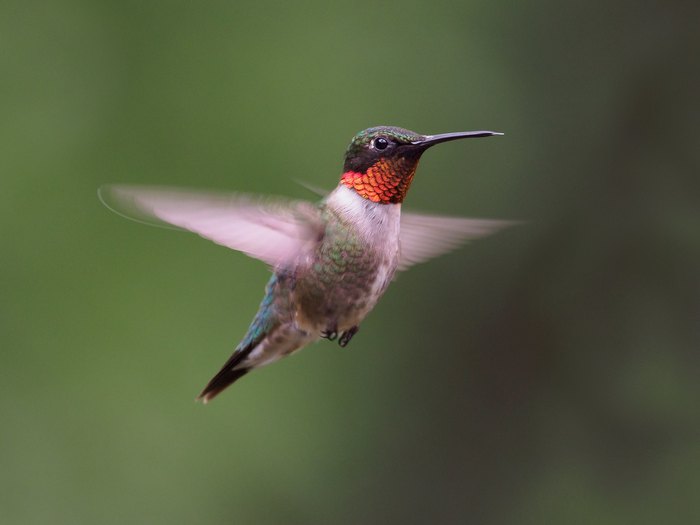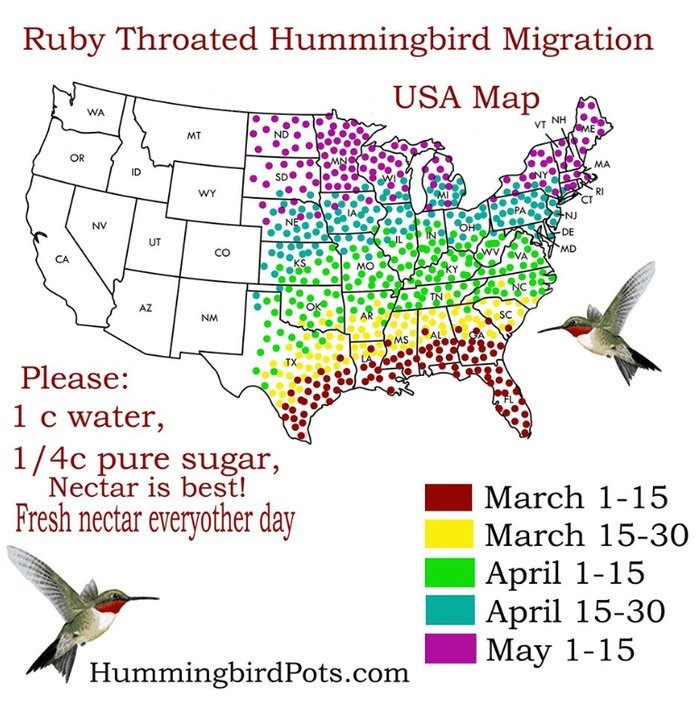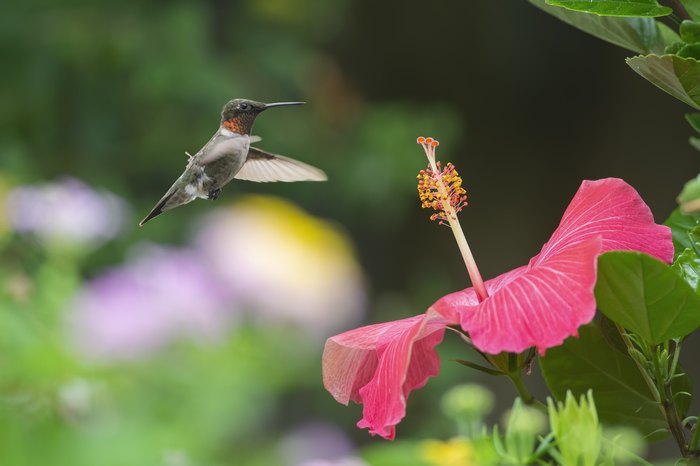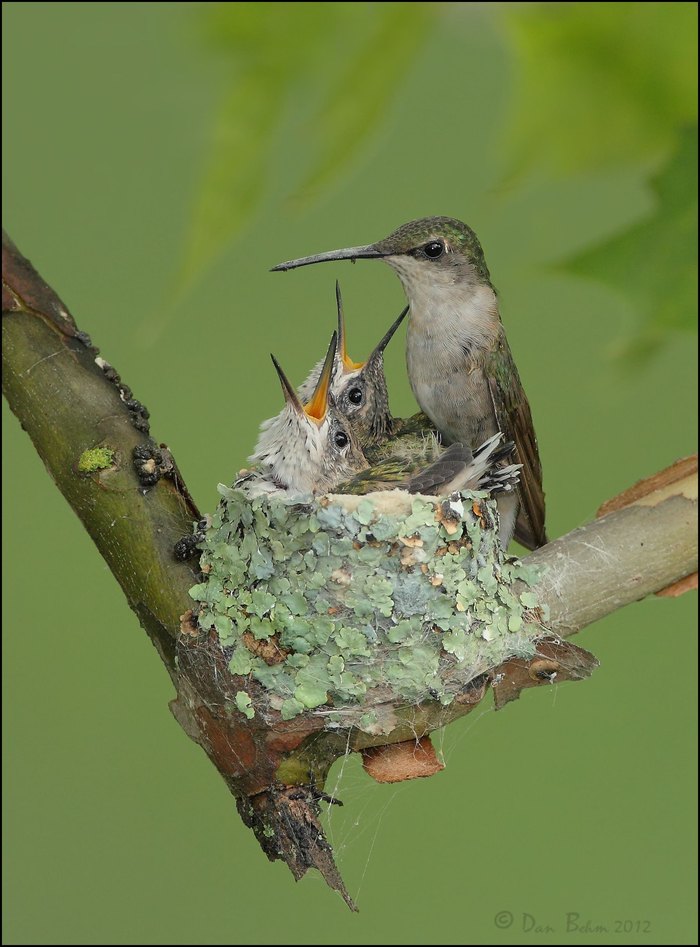Good news, North Carolina! The annual hummingbird migration is nearly underway and we’re ready to begin spotting the graceful Ruby-throated hummingbird in backyards around parts of the Tar Heel State! Make sure your backyard is ready by setting up one of the best hummingbird feeders possible for these oncoming beauties. Each fall, thousands of these exquisite, winged creatures migrate south from as far as Canada all the way down to Central America, Mexico, and parts of Florida – until it’s time to head north again in the spring to breed. So, if you want to see hummingbirds in North Carolina, read on to find out more about how and where to look.
Spring is the time to pull out your hummingbird feeder, clean it up, and fill it with sweet nectar to fuel the flight of the ruby-throated hummingbirds.

This migration map, shows the typical migration dates of the most common of hummingbirds found in the Eastern United States.

This is a helpful guide, and also showcases how hummingbirds have been migrating a bit earlier in the year as the weather in North America warms up year to year.
From mid-March through the beginning of April, thousands of them will take flight and land in backyards all over North Carolina to rest and eat as they make the journey.

And while some may make the Tar Heel State their breeding ground of this season’s new additions, most will travel farther north to build their nest in a shrub or small tree.

Most of us know the ruby-throated hummingbird as having a bright red bib. But that’s actually only true for the males in the species.

In some cultures, a hummingbird’s visit is believed to bring good luck, joy, and love to the person gifted with spotting them.

There’s actually a live interactive map on hummingbirdcentral.com where you can report sightings in order to take part in tracking this year’s hummingbird migration. How fun!
Whether you believe the lore about hummingbirds bringing love and good luck, or are just simply fascinated by this tiny, winged bird, prepare for some springtime delight as they meander in and out of the backyard for the next few weeks!
Have you placed your feeder outside yet? Be sure to use clear nectar that’s free from harmful dyes and preservatives!
Enjoy your spring!